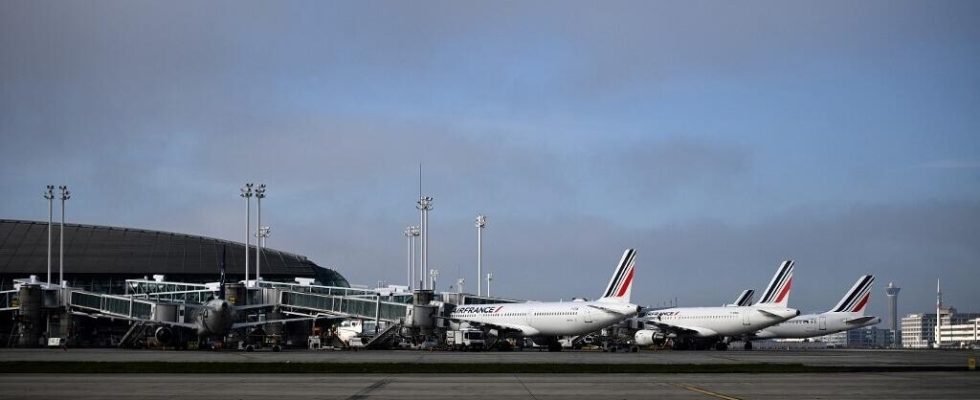The concentrations of ultrafine particles (PUF) at the heart of Roissy-Charles de Gaulle airport are similar to those observed along the Paris ring road, one of the most polluted axes of the capital, according to a study by ‘Airparif published this Thursday February 29.
2 mins
For three months in the fall of 2022, the air quality observatory in Île-de-France recorded an average concentration of PUFs – suspended particles smaller than a virus – of 23,000 particles per centimeter cube in the middle of the largest airport in Franceat the same level as the pollution recorded on the device.
“ The results of this measurement campaign confirm that air traffic causes an increase in the levels of ultrafine particles near airports, in accordance with national and international scientific knowledge. “, indicates Airparif in a summary.
No regulation
In suspension with a diameter of less than 100 nanometers, ultrafine particles are believed to be harmful to health due to their ability to penetrate the body. But to date, they are not subject to regulation, due to lack of sufficient scientific knowledge. More difficult to measure, PUFs are less well known than their larger sisters, PM10 and PM2.5 (fine particles), whose harmful effects on the human body are scientifically established.
Fine particle pollution increases the risk of developing lung diseases, heart disease, stroke or cancer. It caused at least 253,000 premature deaths in the European Union in 2021, according to the latest figures available from the European Environment Agency.
According to the Airparif study, ultrafine particle pollution attributable to air traffic decreases the further one moves away from the airport. At a distance of one kilometer (17,900 particles/cm3), the concentration is still double that recorded in the center of Paris (9,300 particles/cm3).
If the overconcentration remains notable at five kilometers distance, “ this influence is no longer visible ten kilometers away » where other local sources of PUF become predominant, notes Airparif. The study was carried out from mid-September to mid-December 2022 with air traffic averaging nearly 1,150 daily takeoffs or landings. It is part of a multi-year Airparif campaign to document the sources and distribution of ultrafine particles in the Paris region.
Read alsoAir pollution: the European Union tightens its standards, without following WHO recommendations
